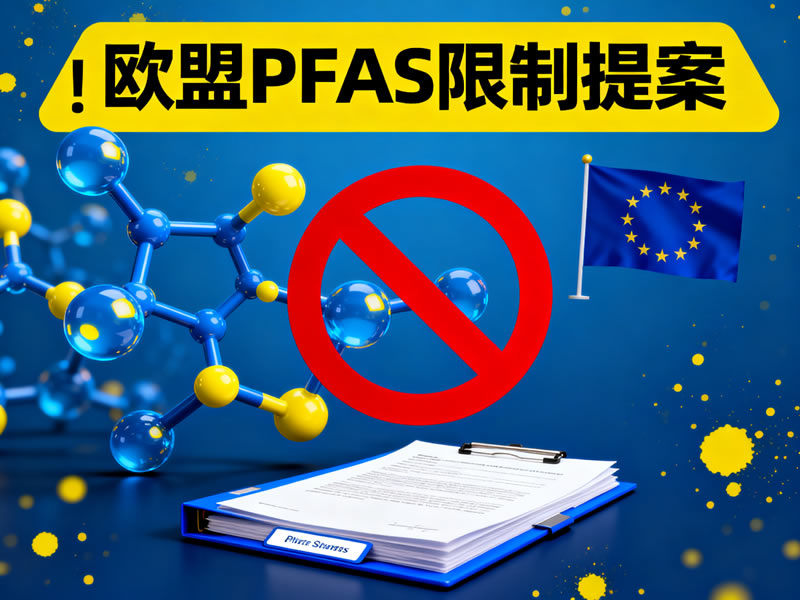On January 13, 2023, the competent authorities of five countries—Denmark, Germany, the Netherlands, Norway, and Sweden—submitted a restriction proposal targeting Per- and Polyfluoroalkyl Substances (PFAS) to the European Chemicals Agency (ECHA). This proposal stemmed from a three-year joint study by the countries, covering the types, applications, and environmental health risks of PFAS, with the ultimate goal of restricting the production and use of such substances within the EU. On February 7, 2023, ECHA officially published the proposal, which is known as "Europe's largest-ever substance ban project" due to its extensive coverage and stringent control measures.
I. Core Understanding of PFAS: Characteristics, Applications, and Risks
(1) Definition and Core Properties
PFAS refers to a class of synthetic chemicals, officially defined as "any substance containing at least one perfluorinated methyl (CF3-) or methylene (-CF2-) carbon atom (to which no hydrogen, chlorine, bromine, or iodine atom is attached)". There are over 10,000 known types of PFAS, with the most prominent characteristic being extremely slow degradation in the environment, and they have clear adverse impacts on human health and the natural environment.
(2) Main Application Scenarios
Thanks to their properties such as water resistance, stain resistance, and high-temperature resistance, PFAS are widely used in consumer products and industrial activities:
II. EU PFAS Ban Promotion Process and Key Timeline
(1) Core Promotion Phases
The implementation of the ban follows a strict statutory process, mainly divided into four phases:
(2) Summary of Key Time Nodes
| Year | Core Process Events |
|---|---|
| 2020 | January: First meeting of the five countries; May-July: Launched evidence collection |
| 2021 | July-October: Conducted the second round of stakeholder consultation; October: Officially initiated proposal drafting |
| 2023 | January 13: Submitted the proposal document; February 7: ECHA published the proposal; March 22: Launched public consultation; April 5: ECHA held an online information session |
| 2024 | RAC and SEAC issue scientific review opinions |
| 2025 | European Commission makes a decision; the ban officially enters into force |
| 2026/2027 | Comprehensive implementation of restrictive measures |
III. Core Details of the Restriction Proposal
(1) Core Restrictive Requirements
The proposal explicitly prohibits the production, use, and placing on the market of PFAS, with specific standards divided into three concentration thresholds. Moreover, the threshold requirements for Categories 1 and 2 will apply 18 months after the ban enters into force:
(2) Supporting Management Requirements
The proposal also clarifies exemption situations, reporting obligations, and implementation details of management plans. For specific content, please refer to the "Annex XV Restriction Report" on the ECHA official website.
IV. Significance of the Proposal
The advancement of this proposal marks that the EU’s control of persistent organic pollutants has entered a "full-category, high-standard" stage. Through restrictions covering the entire chain of PFAS production, circulation, and use, it is expected to reduce their cumulative pollution to the environment and potential risks to human health, while also providing an "EU model" for global PFAS control.

